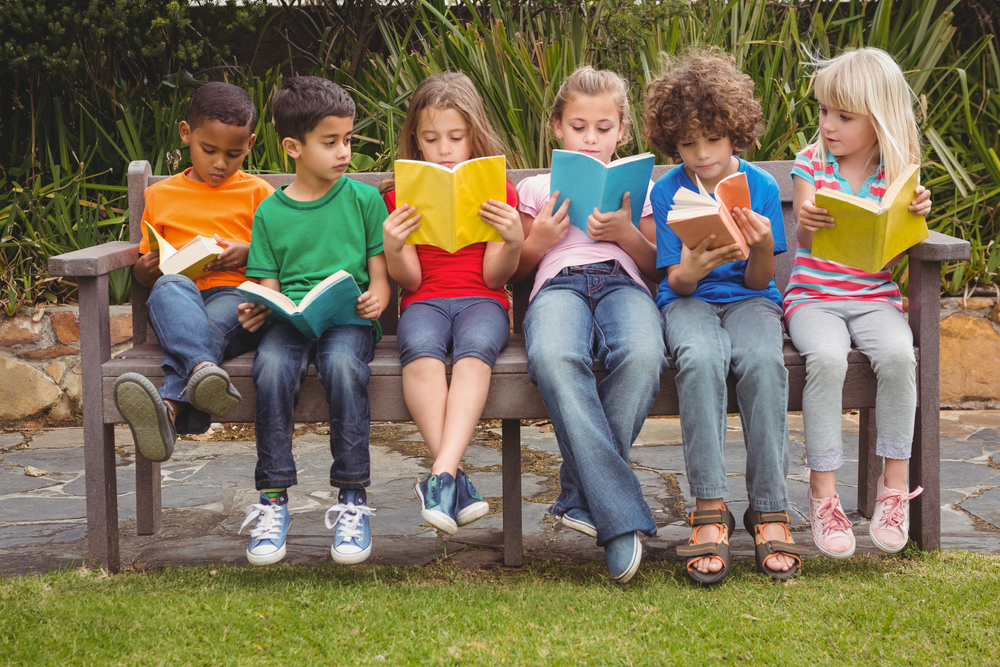Normal Poems Worksheets Activities With Answers for Ages 6-9
7 filtered results
-
From - To
Welcome to our vibrant collection of Normal Poems Worksheets and Activities for ages 6-9! Designed to enhance literacy skills, these engaging worksheets invite young learners to explore the rhythmic world of poetry. Each activity promotes creativity and comprehension, making learning fun and interactive. With ready-to-use answer keys, educators and parents can effortlessly assist children as they dive into captivating poems. From fill-in-the-blank exercises to creative drawing prompts, these resources help reinforce vocabulary and foster a love for literature. Perfect for classroom use or at-home learning, our Normal Poems Worksheets provide a delightful educational experience for young poets!
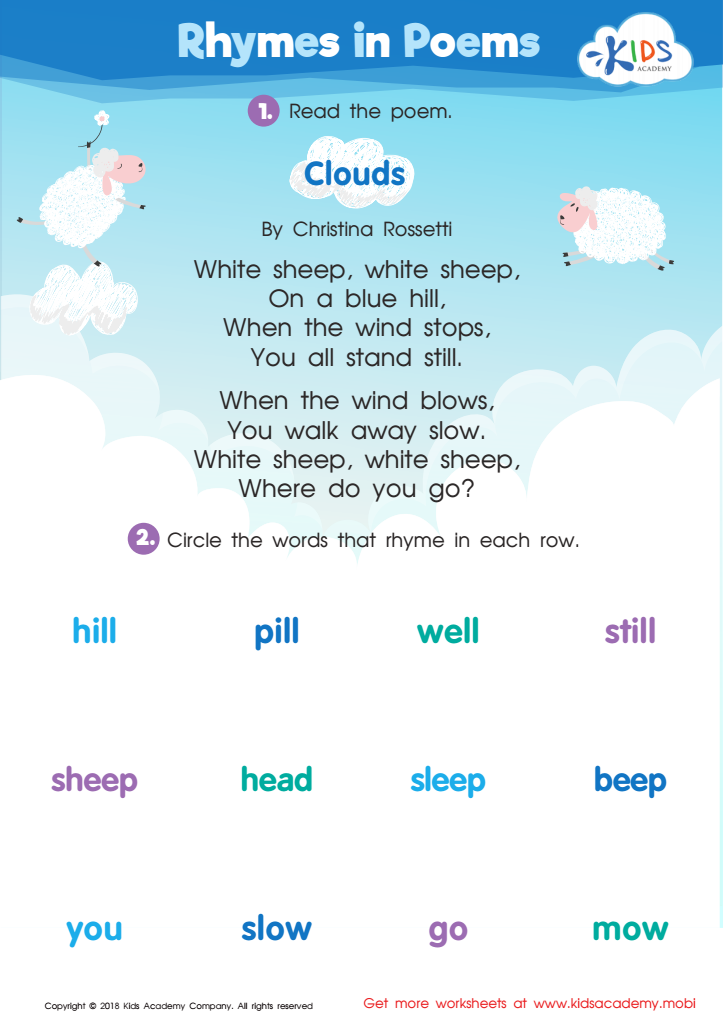

Rhymes in Poems Worksheet
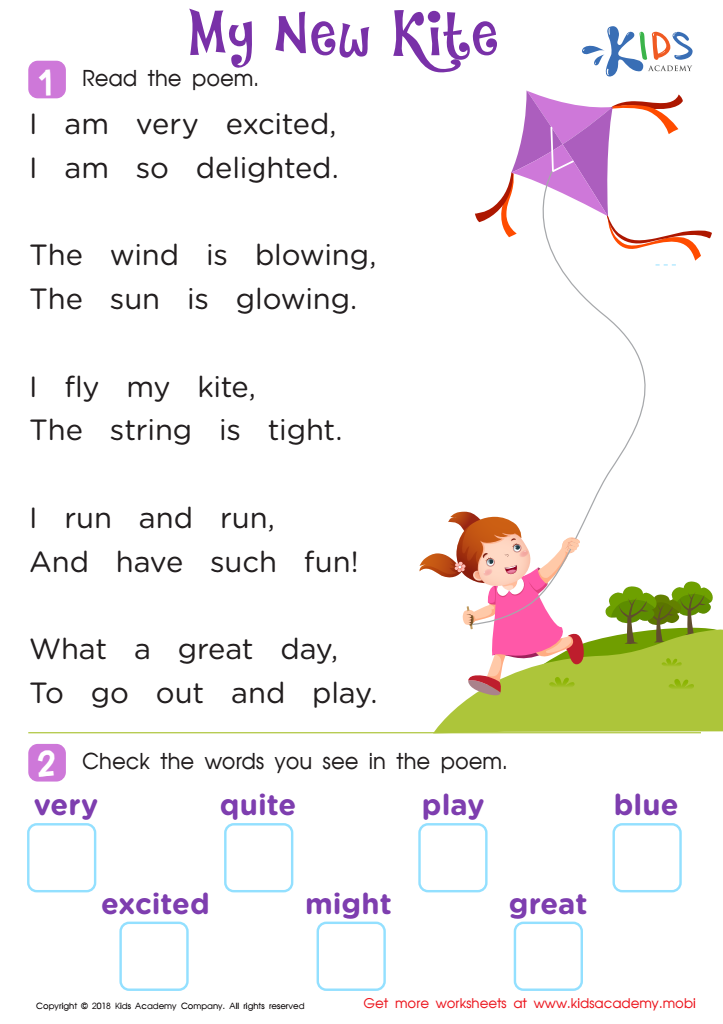

Poem: My New Kite Worksheet
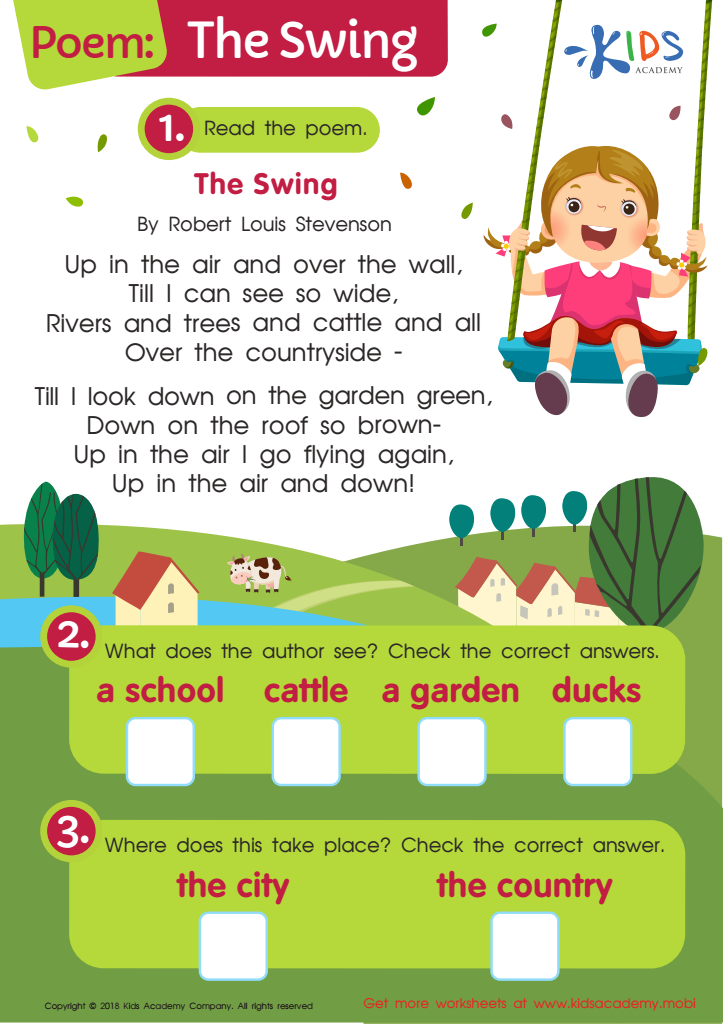

Poem: The Swing Worksheet
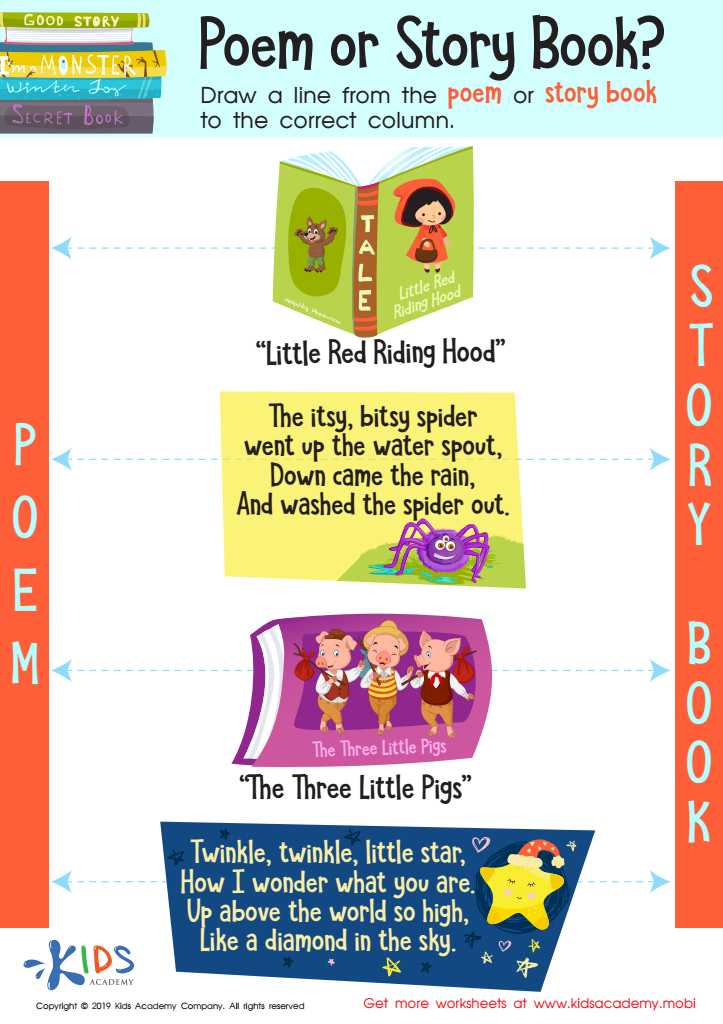

Poem or Story Book? Worksheet
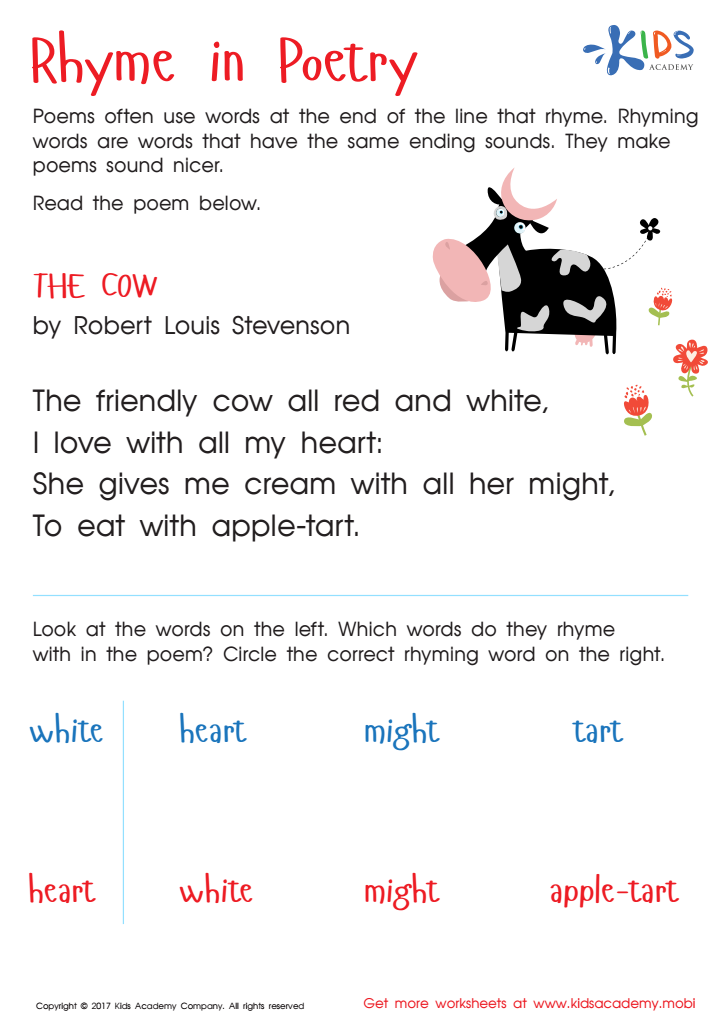

Rhyme In Poetry Worksheet
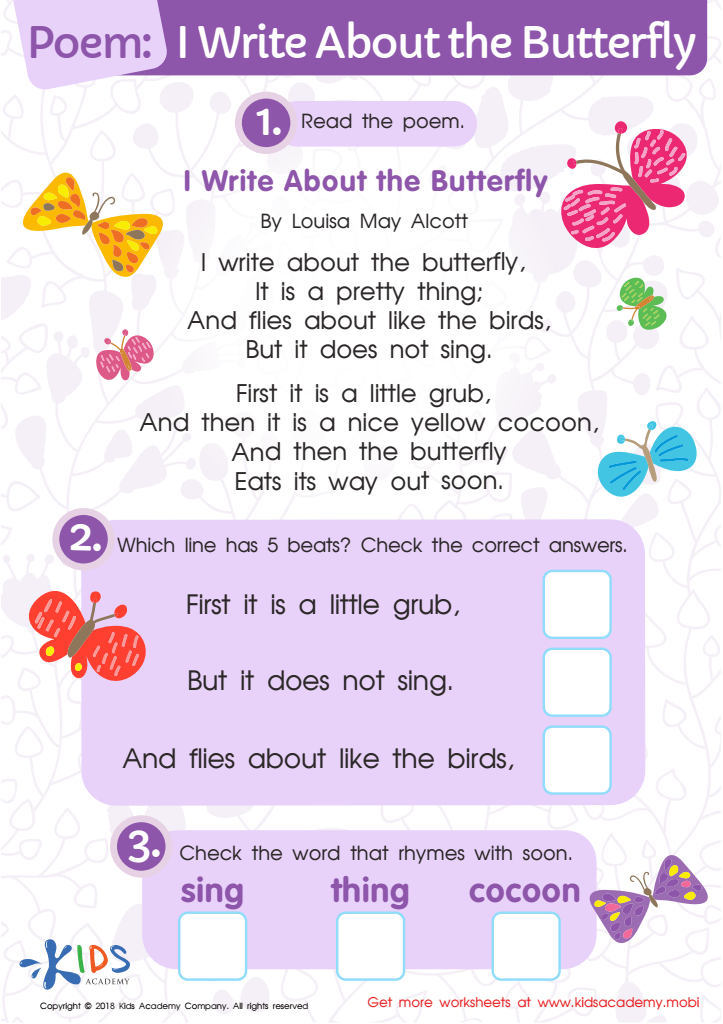

Poem: I Write About The Butterfly Worksheet
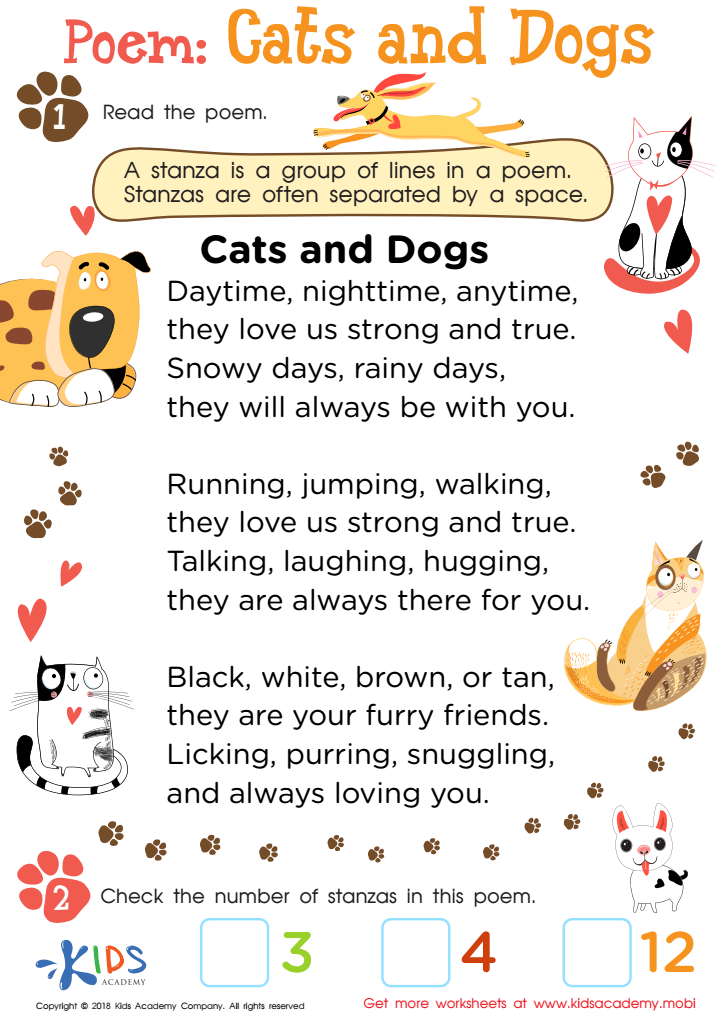

Poem: Cats and Dogs Worksheet
Normal poems activities for children aged 6-9 are crucial for several reasons. First, poetry enhances language development by expanding vocabulary and improving understanding of rhythm and rhyme. Engaging in poetry encourages children to express their feelings and thoughts creatively, fostering emotional intelligence and self-expression.
Moreover, these activities often promote literacy skills, as children learn to decode, analyze, and interpret text. This builds their comprehension skills, which are essential for academic success. Utilizing poems in lessons can also make learning more enjoyable. The playful nature of poetry captures children's attention, making them more willing to participate and explore language.
Additionally, normal poems activities often encourage collaboration among peers. Group settings can foster social skills as children share their interpretations and appreciate each other's work. Involving parents in these activities can strengthen the family bond, as families explore poetry together, discussing themes and surprising perspectives.
Ultimately, incorporating normal poems into educational settings not only enriches children's reading and writing skills but also nurtures their creativity, imagination, and social abilities. Teachers and parents who prioritize these activities provide a holistic approach to learning, supporting children's overall development.

 Assign to My Students
Assign to My Students









